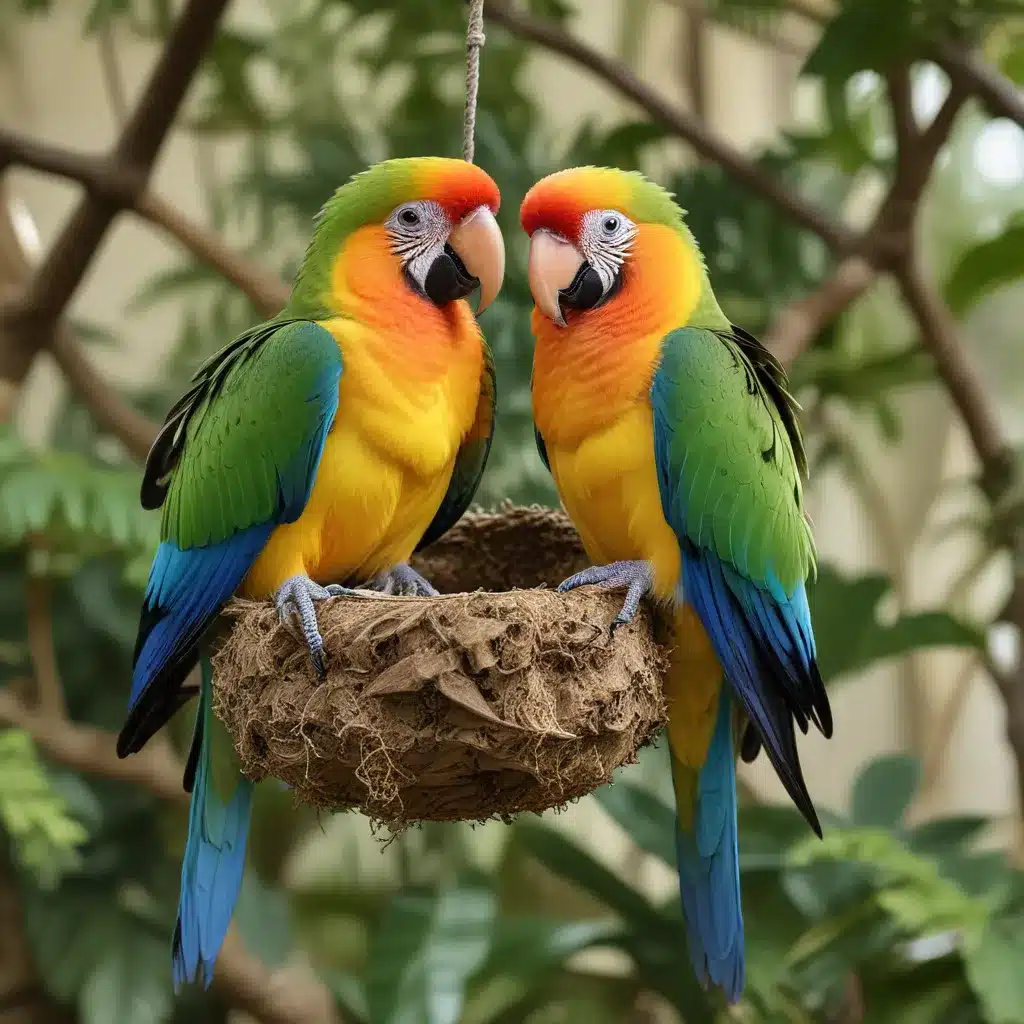
As an experienced avian caretaker and expert in bird species, breeding, care, habitat setup, nutrition, health, training, exotic species management, behavior interpretation, adoption practices, enrichment techniques, safety protocols, seasonal care, FAQs, customer testimonials, bird rescue, product assessments, travel advice, and debunking myths, I’m excited to share my knowledge on optimizing the perching and nesting needs of exotic birds.
Avian Species Diversity
The world of exotic birds is remarkably diverse, encompassing an incredible array of species, each with its own unique behavioral characteristics, habitat preferences, and care requirements. From the vibrant plumage of parrots to the graceful movements of waterfowl, the avian kingdom is a true marvel to behold.
Common Exotic Bird Families
Some of the most commonly kept exotic bird families include parrots (e.g., cockatoos, macaws, conures), finches (e.g., canaries, zebra finches), and waterfowl (e.g., ducks, geese, swans). These groups offer a wide range of sizes, temperaments, and care needs, making them appealing to both novice and experienced bird enthusiasts.
Rare and Endangered Avian Species
While the more common exotic birds garner much attention, it’s important to also consider the plight of rare and endangered avian species. From the majestic cranes to the enigmatic hoatzin, these unique birds face a multitude of threats in the wild and often require specialized care and conservation efforts when in captivity.
Avian Behavioral Characteristics
Exotic birds exhibit a remarkable diversity of behaviors, from the playful antics of parrots to the graceful soaring of raptors. Understanding the natural behaviors and instincts of your avian companion is crucial in providing them with the appropriate environment and enrichment to thrive.
Avian Perching Needs
Perching is a fundamental aspect of avian behavior, as birds rely on secure and comfortable perches for a variety of activities, from resting and preening to surveying their surroundings.
Perch Preferences by Species
Different bird species have distinct preferences when it comes to perching. For example, parrots may favor sturdy, textured perches that allow them to grip tightly, while finches may prefer more delicate, slender perches that accommodate their smaller feet. Recognizing these species-specific needs is essential in designing an appropriate perching environment.
Perch Materials and Designs
The material and design of the perches you provide can greatly impact your bird’s comfort and well-being. Natural wood, such as untreated branches or dowels, can offer a more authentic perching experience, while rope or concrete perches may be beneficial for certain species. The diameter, length, and placement of perches should also be tailored to the size and needs of your bird.
Placement of Perches in Enclosures
The strategic placement of perches within your bird’s enclosure can greatly influence their ability to express natural behaviors. Perches should be positioned at varying heights and distances to encourage movement, provide multiple vantage points, and allow for natural flight patterns. Ensuring that perches are securely mounted and free from obstructions is also crucial for your bird’s safety.
Avian Nesting Behaviors
Nesting is a fundamental instinct for many bird species, serving as a vital component of their breeding and reproductive cycles.
Nesting Instincts and Habitat
Understanding the natural nesting instincts and habitat preferences of your exotic bird is crucial in providing them with the appropriate nesting environment. Some species, such as parrots, may prefer enclosed, cavity-like nesting sites, while others, like waterfowl, may thrive in more open, platform-style nests.
Nesting Material Requirements
The materials used in the construction of a nest can greatly impact the bird’s comfort and the success of their breeding efforts. Providing a variety of suitable nesting materials, such as soft, natural fibers, twigs, and leaves, can allow your bird to engage in their natural nesting behaviors and create a secure, comfortable environment for their young.
Nest Box Design Considerations
When it comes to nest boxes, the design and placement are critical factors to consider. Factors such as the box’s size, shape, entrance size, and ventilation can all influence the bird’s acceptance and use of the nest. Consulting with avian experts or referencing industry guidelines can help ensure your nest box design meets the specific needs of your exotic bird species.
Optimizing Exotic Bird Environments
Creating an optimal environment for your exotic bird goes beyond just providing the necessary perching and nesting elements. Factors such as temperature, humidity, lighting, and enrichment all play a crucial role in supporting your bird’s overall health and well-being.
Temperature and Humidity Factors
Maintaining appropriate temperature and humidity levels is essential for the well-being of your exotic bird. Many species are sensitive to extreme fluctuations or prolonged exposure to unsuitable environmental conditions, which can lead to health issues and stress. Consult with your avian veterinarian or reputable bird care resources to determine the optimal temperature and humidity ranges for your specific bird species.
Lighting and Photoperiod Needs
Lighting and photoperiod (the duration of daily light exposure) can significantly impact an exotic bird’s behavior, physiology, and overall health. Providing the correct lighting spectrum and adjusting the photoperiod to mimic the bird’s natural habitat can support natural behaviors, such as breeding, molting, and activity patterns.
Enrichment and Stimulation Strategies
Exotic birds are intelligent and curious creatures, requiring a stimulating environment to prevent boredom, stress, and the development of unwanted behaviors. Incorporating a variety of enrichment activities, such as foraging toys, rotating perches, and novel objects, can encourage natural behaviors and promote overall well-being.
Remember, the specific needs of exotic birds can vary greatly depending on the species, and it’s essential to consult with avian experts, veterinarians, and reputable resources to ensure you are providing the best possible care for your feathered companion. By optimizing the perching, nesting, and overall environmental conditions, you can create a thriving and enriching home for your exotic bird.
For more information on exotic bird care and the latest news and events in the avian community, be sure to visit Mika Birds Farm. Our team of experienced avian caretakers is dedicated to providing the highest quality care and resources to help you and your bird thrive.


